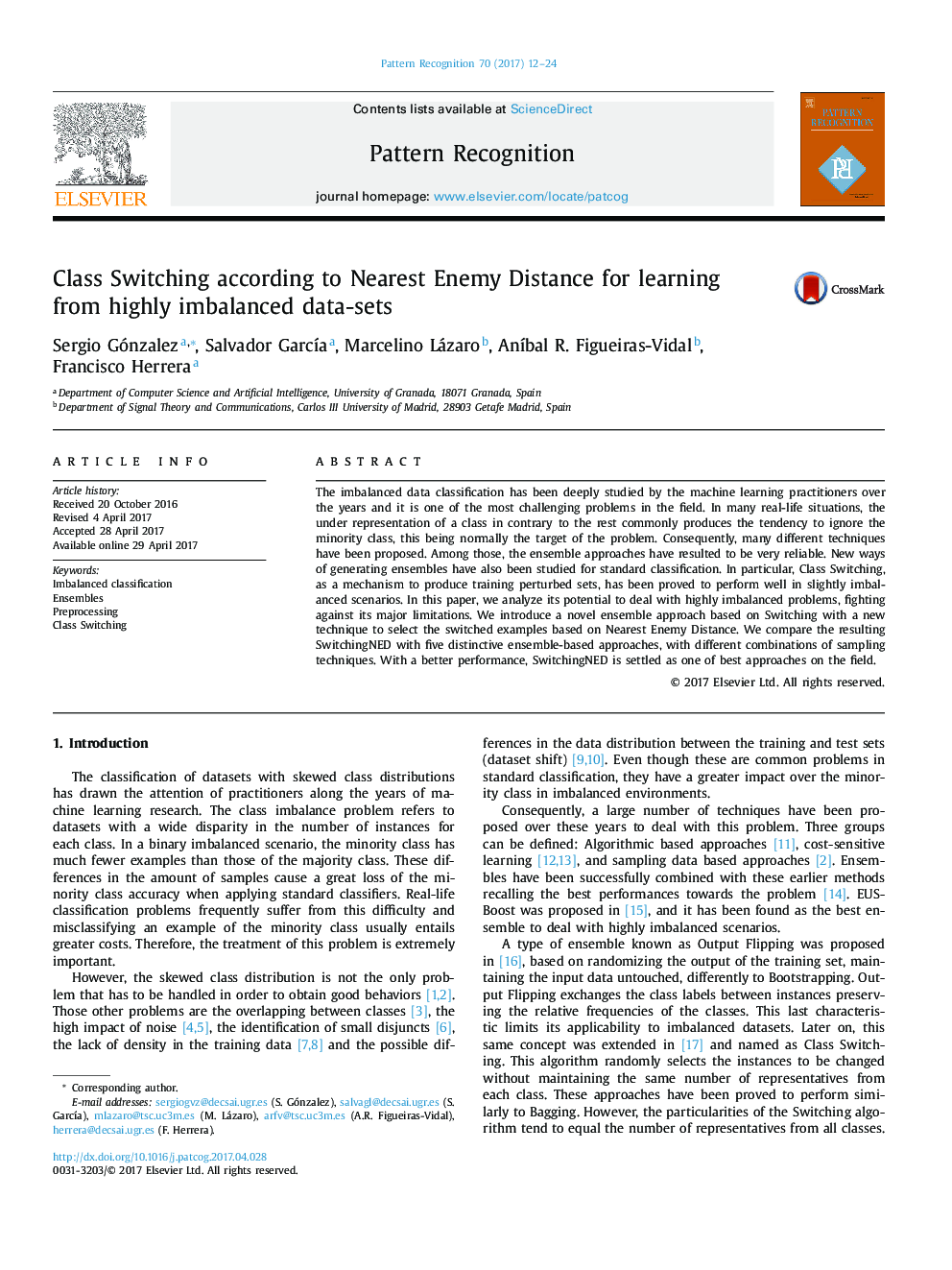| Article ID | Journal | Published Year | Pages | File Type |
|---|---|---|---|---|
| 4969516 | Pattern Recognition | 2017 | 13 Pages |
Abstract
The imbalanced data classification has been deeply studied by the machine learning practitioners over the years and it is one of the most challenging problems in the field. In many real-life situations, the under representation of a class in contrary to the rest commonly produces the tendency to ignore the minority class, this being normally the target of the problem. Consequently, many different techniques have been proposed. Among those, the ensemble approaches have resulted to be very reliable. New ways of generating ensembles have also been studied for standard classification. In particular, Class Switching, as a mechanism to produce training perturbed sets, has been proved to perform well in slightly imbalanced scenarios. In this paper, we analyze its potential to deal with highly imbalanced problems, fighting against its major limitations. We introduce a novel ensemble approach based on Switching with a new technique to select the switched examples based on Nearest Enemy Distance. We compare the resulting SwitchingNED with five distinctive ensemble-based approaches, with different combinations of sampling techniques. With a better performance, SwitchingNED is settled as one of best approaches on the field.
Related Topics
Physical Sciences and Engineering
Computer Science
Computer Vision and Pattern Recognition
Authors
Sergio Gónzalez, Salvador GarcÃa, Marcelino Lázaro, AnÃbal R. Figueiras-Vidal, Francisco Herrera,
